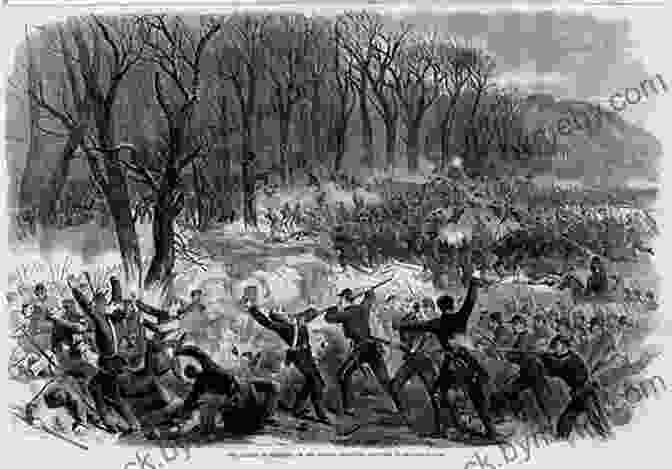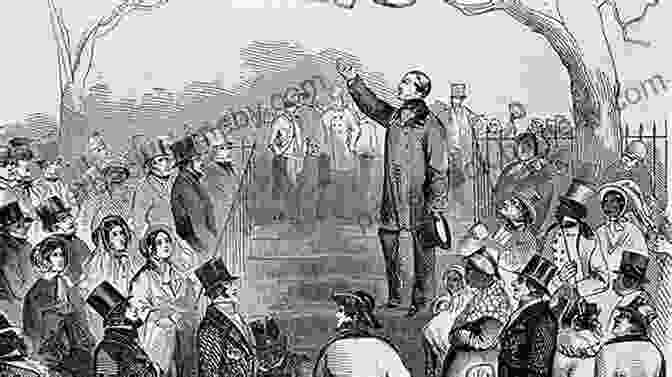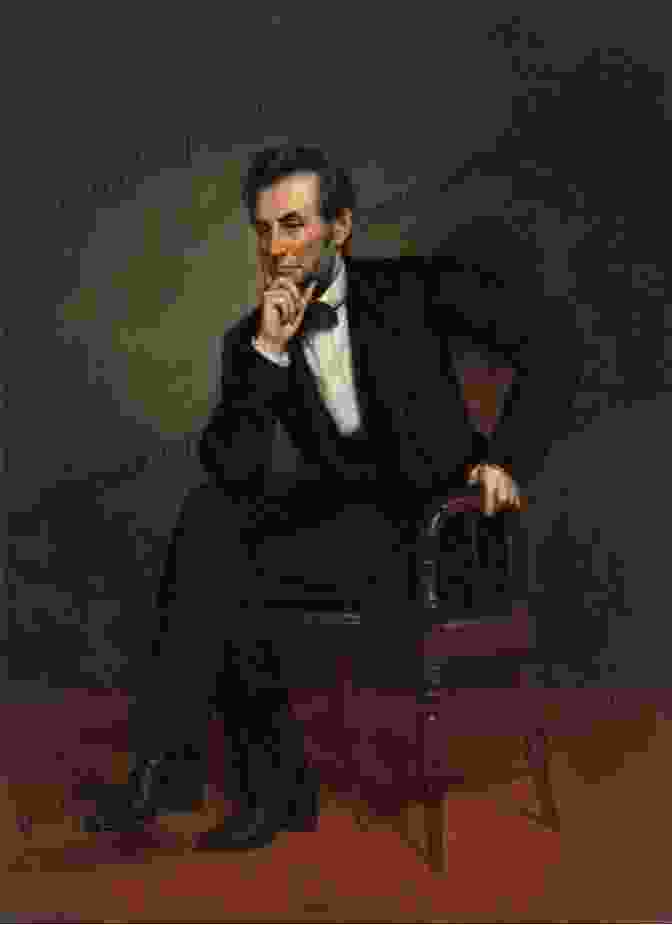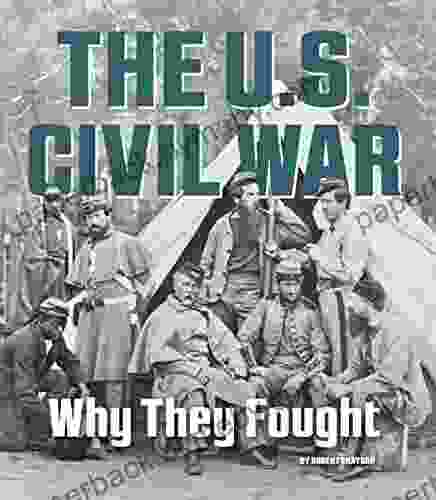Unveiling the Hidden Truths: Delve into the Profound Causes Behind the Civil War


The Civil War: A Clash of Ideals and Ambitions
The American Civil War, a tumultuous conflict that engulfed the nation from 1861 to 1865, forever altered the course of American history. It was a pivotal moment that pitted brother against brother, tearing apart the very fabric of the young nation. But what were the underlying causes that ignited this cataclysmic struggle? In his groundbreaking work, "The Civil War: What Were They Fighting For?," acclaimed historian James M. McPherson delves into the multifaceted complexities that fueled this devastating conflict.
5 out of 5
| Language | : | English |
| File size | : | 33736 KB |
| Text-to-Speech | : | Enabled |
| Screen Reader | : | Supported |
| Enhanced typesetting | : | Enabled |
| Word Wise | : | Enabled |
| Print length | : | 91 pages |
1. Slavery: The Heart of the Matter
At its core, the Civil War was a struggle over the institution of slavery. The Southern states, heavily dependent on an agricultural economy, relied heavily on the labor of enslaved African Americans. They fiercely resisted any attempts to abolish or limit the practice, viewing it as essential to their way of life. The Northern states, on the other hand, had long advocated for the gradual abolition of slavery and saw its expansion into new territories as a moral and political threat.

2. States' Rights and Federal Authority
Beyond the issue of slavery, the Civil War also exposed deep divisions over the balance of power between the federal government and individual states. Southern states believed in the concept of states' rights, maintaining that they possessed the sovereign authority to govern themselves. They resented the increasing federal intervention in their affairs, which they perceived as a violation of their autonomy.
3. Economic Divergence and Political Division
The North and South had developed distinct economic systems. The North embraced industrialization, urbanization, and a diverse economy, while the South remained primarily agricultural. This economic divergence contributed to political polarization between the two regions. The Northern states favored policies that promoted industrial growth, such as tariffs and internal improvements. The Southern states, on the other hand, opposed these measures, fearing they would harm their agricultural interests.

4. The Issue of Expansion
The question of whether slavery would be allowed in new territories acquired by the United States became a major point of contention. The South sought to expand slavery into new lands, while the North opposed such expansion, seeing it as a threat to the free labor system. The debate over territorial expansion reached a boiling point when the Kansas-Nebraska Act of 1854 allowed settlers in those territories to decide the issue of slavery through popular sovereignty. This legislation, which undermined the Missouri Compromise of 1820, inflamed tensions and further divided the nation.

5. Political Polarization and the Failure of Compromise
Over time, the differences between the North and South became increasingly entrenched. Political leaders from each region grew more polarized, unwilling to compromise or find common ground. The two-party system, which had once provided a platform for debate, now became a source of division. The Democratic Party became the champion of Southern interests, while the Republican Party emerged as the voice of the abolitionist and free-soil movements in the North.
6. The Rise of Militant Abolitionism and Southern Secession
As tensions mounted, militant abolitionists in the North became increasingly vocal in their demands for the immediate emancipation of enslaved African Americans. This radicalism provoked a backlash from the South, where secessionist movements gained momentum. In December 1860, South Carolina became the first state to secede from the Union, citing the election of Abraham Lincoln, a vocal opponent of slavery, as president.

7. The Outbreak of War
By March 1861, seven Southern states had seceded and formed the Confederate States of America. Confederate forces seized federal forts and arsenals within their territories, forcing President Lincoln to take decisive action. On April 12, 1861, Confederate forces fired upon Fort Sumter in Charleston Harbor, South Carolina, an act that marked the outbreak of the Civil War.
: A Legacy of Struggle and Reconciliation
The American Civil War was a complex and tragic conflict that left a lasting impact on the nation. The underlying causes were multifaceted, rooted in deep divisions over slavery, states' rights, economic divergence, and political polarization. The war led to the emancipation of enslaved African Americans and the strengthening of the federal government. However, it also left a legacy of racial inequality and regional animosity that would take decades to heal.
James M. McPherson's "The Civil War: What Were They Fighting For?" offers a comprehensive and thought-provoking exploration of these complex causes. By delving into the historical context and motivations of both the North and the South, McPherson provides a nuanced understanding of this pivotal event in American history. His work serves as an essential guide for anyone seeking to unravel the intricate web of factors that ignited the American Civil War.
5 out of 5
| Language | : | English |
| File size | : | 33736 KB |
| Text-to-Speech | : | Enabled |
| Screen Reader | : | Supported |
| Enhanced typesetting | : | Enabled |
| Word Wise | : | Enabled |
| Print length | : | 91 pages |
Do you want to contribute by writing guest posts on this blog?
Please contact us and send us a resume of previous articles that you have written.
 Book
Book Novel
Novel Page
Page Chapter
Chapter Text
Text Story
Story Genre
Genre Reader
Reader Library
Library Paperback
Paperback E-book
E-book Magazine
Magazine Newspaper
Newspaper Paragraph
Paragraph Sentence
Sentence Bookmark
Bookmark Shelf
Shelf Glossary
Glossary Bibliography
Bibliography Foreword
Foreword Preface
Preface Synopsis
Synopsis Annotation
Annotation Footnote
Footnote Manuscript
Manuscript Scroll
Scroll Codex
Codex Tome
Tome Bestseller
Bestseller Classics
Classics Library card
Library card Narrative
Narrative Biography
Biography Autobiography
Autobiography Memoir
Memoir Reference
Reference Encyclopedia
Encyclopedia Zac Bissonnette
Zac Bissonnette Og Mandino
Og Mandino Patrick Symmes
Patrick Symmes Stanley Vast
Stanley Vast Ryan S Walters
Ryan S Walters Nancy Uno
Nancy Uno Kenneth E Bailey
Kenneth E Bailey Rachel Richards
Rachel Richards Kevin Leman
Kevin Leman William Gerin
William Gerin Patty Duke
Patty Duke Kevin D Hoover
Kevin D Hoover Stan Weinstein
Stan Weinstein Necoco
Necoco Kent Garrett
Kent Garrett Tom Geng
Tom Geng Peter Hathaway Capstick
Peter Hathaway Capstick Nicole Jardim
Nicole Jardim Susan Braudy
Susan Braudy Rebecca Kenneison
Rebecca Kenneison
Light bulbAdvertise smarter! Our strategic ad space ensures maximum exposure. Reserve your spot today!

 Maurice ParkerUnveiling the Enchanting World of 'The Dog and the Dragon Part': A Literary...
Maurice ParkerUnveiling the Enchanting World of 'The Dog and the Dragon Part': A Literary...
 J.R.R. TolkienThe Clean Green Dragon: A Captivating Adventure into the Realm of Imagination
J.R.R. TolkienThe Clean Green Dragon: A Captivating Adventure into the Realm of Imagination
 Dan HendersonEscape to Middle-earth with "Short Breaks in Mordor": Uncover the Hidden Gems...
Dan HendersonEscape to Middle-earth with "Short Breaks in Mordor": Uncover the Hidden Gems... Boris PasternakFollow ·6.9k
Boris PasternakFollow ·6.9k Ken SimmonsFollow ·17k
Ken SimmonsFollow ·17k Derrick HughesFollow ·3.2k
Derrick HughesFollow ·3.2k Julio CortázarFollow ·6.2k
Julio CortázarFollow ·6.2k W.B. YeatsFollow ·18.6k
W.B. YeatsFollow ·18.6k Mario SimmonsFollow ·13.9k
Mario SimmonsFollow ·13.9k Duncan CoxFollow ·3.3k
Duncan CoxFollow ·3.3k James JoyceFollow ·10.8k
James JoyceFollow ·10.8k

 Isaac Asimov
Isaac AsimovEmbark on an Epic Adventure: The Colorado Trail 9th...
Unveiling the Treasures of the Colorado...

 Clinton Reed
Clinton ReedUltimate Football Heroes: Uncover the Gridiron Greatness...
Enter the World...

 Ibrahim Blair
Ibrahim BlairUnveiling the Secrets of Stolen Focus: A Journey to...
In today's relentless digital...

 Colt Simmons
Colt SimmonsRediscover the Founding Father's Vision: Thomas Jefferson...
Immerse Yourself in the Unedited Words of...

 Juan Butler
Juan ButlerExcel in Language Learning: The Ultimate Self-Study...
Unlock Your Language Potential with Our...
5 out of 5
| Language | : | English |
| File size | : | 33736 KB |
| Text-to-Speech | : | Enabled |
| Screen Reader | : | Supported |
| Enhanced typesetting | : | Enabled |
| Word Wise | : | Enabled |
| Print length | : | 91 pages |








